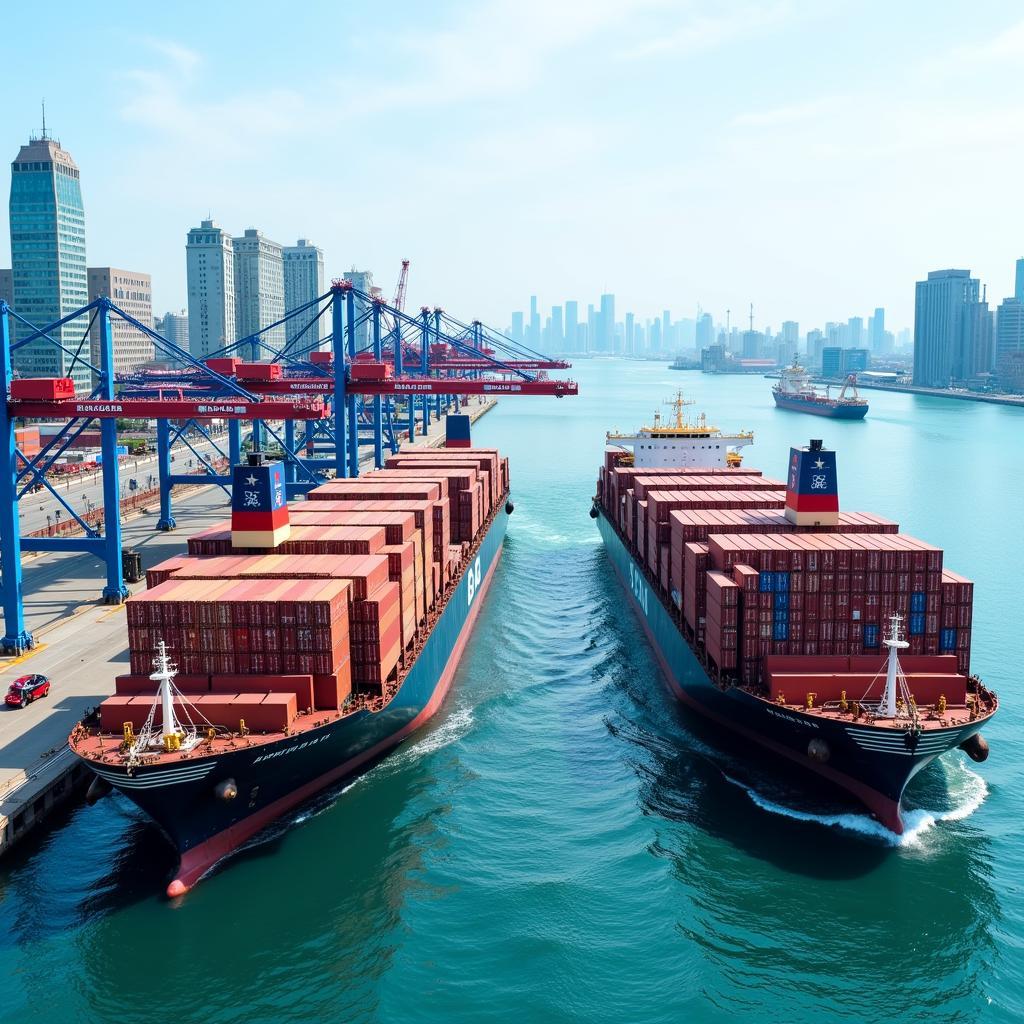Asean China relations are complex and multifaceted, shaping the economic and political landscape of Southeast Asia. This dynamic interplay involves trade, investment, diplomacy, and cultural exchange, creating both opportunities and challenges for the region. This article delves into the intricacies of the ASEAN China partnership, exploring its historical evolution, current state, and future prospects.
The Evolution of ASEAN China Relations: From Distrust to Dialogue
Initially marked by suspicion and ideological differences, ASEAN China relations have undergone a significant transformation. The end of the Cold War paved the way for increased engagement, culminating in the establishment of a dialogue partnership in 1991. This marked a turning point, fostering greater cooperation in areas like trade and security. The ASEAN China Free Trade Area (ACFTA), signed in 2002, further solidified economic ties, boosting trade volumes and promoting regional integration.
China’s growing economic influence has been a key driver of this evolving relationship. Its Belt and Road Initiative (BRI), a massive infrastructure project, has further deepened economic connections with ASEAN member states. However, the BRI has also sparked concerns about debt sustainability and potential strategic implications.
Navigating the South China Sea: A Point of Contention
Despite growing economic ties, the South China Sea dispute remains a major challenge in ASEAN China relations. Overlapping territorial claims and maritime disputes have led to increased tensions and military buildup in the region. ASEAN and China have been working towards a Code of Conduct (COC) to manage maritime disputes and maintain peace and stability in the South China Sea. However, negotiations have been protracted and complex.
How can ASEAN and China effectively manage their differences and build a more stable and cooperative relationship in the South China Sea? Finding a mutually acceptable solution is crucial for maintaining regional peace and prosperity.
Economic Cooperation: The Engine of ASEAN China Relations
Economic cooperation remains the cornerstone of the ASEAN China partnership. China is ASEAN’s largest trading partner, and ASEAN is among China’s top trading partners. The ACFTA has significantly reduced tariffs and facilitated cross-border trade and investment flows. Furthermore, China’s investment in infrastructure projects, particularly through the BRI, has contributed to economic development in several ASEAN countries. However, concerns remain about ensuring equitable benefits and addressing potential risks associated with these investments.
What are the key economic opportunities and challenges for ASEAN in its relationship with China?
ASEAN can leverage China’s vast market and investment potential to drive economic growth and development. However, it’s crucial to manage potential risks and ensure that the benefits of economic cooperation are shared equitably among ASEAN member states.
Looking Ahead: The Future of ASEAN China Relations
The future trajectory of ASEAN China relations will depend on how both sides navigate complex issues such as the South China Sea dispute, economic competition, and geopolitical dynamics. Strengthening mechanisms for dialogue and cooperation, promoting mutual trust and understanding, and finding common ground on contentious issues are essential for building a more stable and productive partnership. This includes exploring new areas of cooperation in areas like digital economy, sustainable development, and public health.
How can ASEAN and China build a more resilient and mutually beneficial partnership in the face of emerging global challenges?
Open communication, fostering people-to-people exchanges, and addressing shared concerns are key to forging a stronger and more sustainable ASEAN China relationship.
Conclusion
The ASEAN China relationship is a dynamic and complex interplay of cooperation and competition. While economic ties remain strong and offer significant opportunities, challenges such as the South China Sea dispute require careful management. Building a more stable and mutually beneficial partnership requires sustained dialogue, mutual respect, and a commitment to finding common ground on contentious issues. The future of ASEAN China relations will be crucial for shaping the political and economic landscape of Southeast Asia and beyond.
FAQ
- What is ACFTA?
- What are the main areas of cooperation between ASEAN and China?
- What are the key challenges in the ASEAN China relationship?
- How does the South China Sea dispute affect ASEAN China relations?
- What is the significance of the Belt and Road Initiative for ASEAN?
- How can ASEAN and China enhance their cooperation in the future?
- What is the role of dialogue in managing ASEAN China relations?
Scenarios:
-
Scenario: A small business in Vietnam wants to export their products to China.
- Question: What are the trade regulations and procedures they need to follow under ACFTA?
-
Scenario: A student in Indonesia is interested in learning more about Chinese culture.
- Question: What are the available scholarship opportunities for studying in China?
Further Exploration:
- Explore more articles about ASEAN’s relationship with other dialogue partners.
- Learn more about the economic and political dynamics within ASEAN.
Contact Us:
For further assistance, please contact us: Phone: 0369020373, Email: aseanmediadirectory@gmail.com, or visit our address: Thon Ngoc Lien, Hiep Hoa, Bac Giang, Vietnam. Our customer service team is available 24/7.


